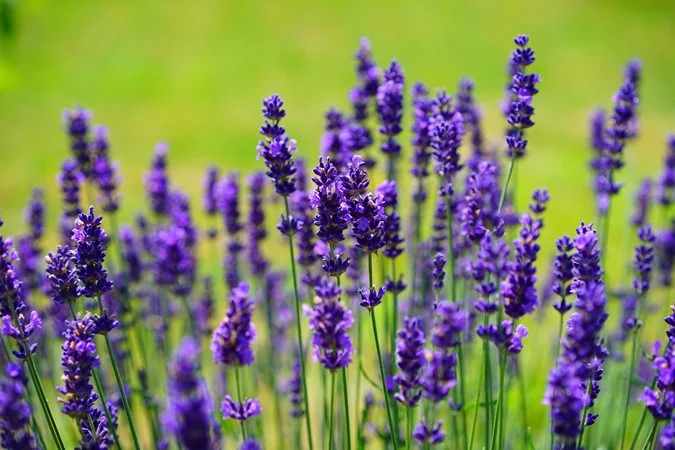The sweet scent of this perennial plant has long been a favorite of gardeners and nature enthusiasts alike. With its gray-green foliage, upright flower spikes, and compact shrub form, lavender (Lavandula spp.) is a delightful addition to any garden.
Planting lavender is best in the spring after the risk of frost has passed and the soil has warmed up. It grows moderately, often adding a few inches to its size each year. But beware! Unlike Ice Plants, lavender can be toxic to pets like dogs and cats.
Most common Lavender types:
- English lavender (Lavandula angustifolia)
- Spanish lavender (Lavandula stoechas)
- Lavandin (Lavandula x intermedia)
- Portuguese lavender (Lavandula latifolia)
- French lavender (Lavandula dentata)
Care
If you’re looking to care for your lavender plants, here are a few important things to keep in mind.
- Sunlight: First, make sure your plants receive plenty of sunlight as this will encourage more buds and bigger bushes.
- Soil: Use well-drained soil that’s not too rich in organic matter, as lavender prefers lean soil for optimal growth. A soil pH of 6.5 or higher will keep your plants healthy and enhance their fragrance.
- Water: Lavender is drought-tolerant and can handle extended periods without water, so avoid overwatering to prevent fungal disease and root rot.
- Temperature: This is a plant that prefers warm climates with temperatures around 68-86°F (20-30°C) during spring and early summer, but it can tolerate lower temperatures as well.
Propagation
Propagating lavender can be done through either softwood or hardwood cuttings, using sterilized sharp knives to cut a 3-inch segment of a healthy shoot, stripping the leaves from the bottom 2 inches of the stem, dipping the stripped side in rooting hormone, and burying it in moist seed-starting mix before placing it in a warm, filtered light environment.
Once roots are established, the plant can be fed with a diluted liquid plant fertilizer and transplanted into a larger pot or outside.
Common Pests
Pruning
When it comes to pruning lavender, knowing the appropriate timing and technique is crucial for its well-being. Follow these guidelines specifically for lavender plants:
- Prune right after the first flowering and once more in late August, after the last bloom has faded.
- Cut off approximately two-thirds of the plant’s height or just above the bottom two sets of leaves on each stem.
- Take care not to damage the woody part of the plant while pruning.
- By practicing this semi-annual pruning routine, you’ll help keep your lavender plant healthy and maintain its compact shape.
Remember, these pruning steps are specifically tailored for lavender, ensuring its vitality and a visually appealing appearance.
Frequently Asked Questions
Although lavender thrives in arid areas, it’s best grown as an annual or container plant in the South and it doesn’t do well in high humidity, except for some varieties; most are hardy in Zones 5 to 9, while Spanish Lavender is only hardy in Zones 7 to 9.
What is lavender like in winter?
In the wintertime, lavender plants go through a dormant period, during which their green leaves turn into a silver, darker green. It is advised not to prune or cover the plants in the winter, especially in colder climates.
What is the lowest temperature lavender tolerate?
Lavenders can tolerate temperatures in the winter as low as 40°F (5°C).
How long does lavender last?
Properly cared for lavender can last 10-15 years with annual pruning to stimulate growth.

